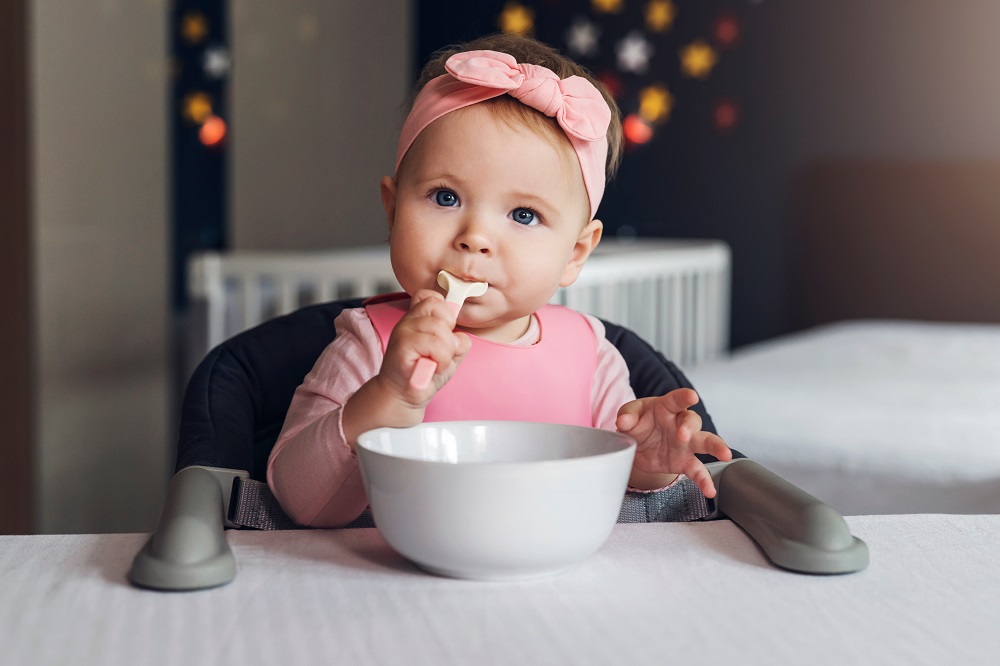The ideal food for an infant is the mother’s breast milk. Exclusive breastfeeding is recommended until 4-6 months of age. To prevent baby eczema during breastfeeding, a diet with a restriction on highly allergenic foods is recommended for the mother. This diet is mandatory for mothers of children who have had manifestations of allergies or someone in the family has a genetic predisposition to allergic diseases.
Artificial nutrition for infants requires a careful selection of the formula that is suitable for the baby in each case. Young parents may be confused by the variety of baby foods, so it is best to buy formula on the recommendation of the pediatrician.
The basic ingredients of baby food are the same. That is why the main difference between the formulas is in the additives and the ratio of certain substances.
The main reasons that lead to allergies in a baby:
- Irrational nutrition: when breastfeeding, the mother consumes products that may cause allergic reactions; early artificial feeding; premature introduction of fruit juices and complementary foods;
- Failure to care for the baby’s skin (it should not be dry).
- Violation of the normal microflora of the skin.
- Lack of vitamins, micronutrients, and fatty acids
- Functional disorders of the gastrointestinal tract.
- Infectious diseases or hormonal imbalances.
- Contact with chemicals.
- Taking certain medications.
The presence of these factors, combined with a genetic predisposition (the presence of allergic diseases in the parents or other close relatives) greatly increases the likelihood of dermatitis.
Preventing baby eczema
An important aspect of prevention is the correct introduction of complementary foods. The main rule is to do it in time and gradually. Each new product should be introduced, starting with a small amount, and gradually increasing the portion. The next product should be introduced when you are confident that the previous one is well tolerated. Eczema is as dangerous as any other disease. It leads to a deterioration of the body’s defenses, making it vulnerable to viral infections. Many patients have purulent formations on the damaged skin areas.
In the absence of clinical manifestations of dermatitis, the diet can be expanded, by looking at the reaction of the baby. The appearance of a rash is a signal that this product should not be used shortly.
It is desirable to keep a detailed food diary of all the ingredients used in cooking, to observe the dynamics of reaction to a particular ingredient.
The correct tactic of the parents in this pathology from the first months of life of their long-awaited baby is very important. The mother is primarily responsible for whether the disease will be mild or severe.
Therapeutic feeding

There are quite a few options for the correct diet for the baby in the first year of life. The nutrition of a child under 1 year differs significantly from the usual menu for an adult. But usually, it is this figure that becomes a kind of boundary when parents begin to quickly expand the list of products already created. Proper nutrition for newborns becomes the basis for growth and development.
It is very important to follow a hypoallergenic diet. Usually, a hypoallergenic diet lasts at least a year. Food products are distributed according to the degree of allergenicity. Here are 10 ingredients that should be avoided for as long as possible when feeding an allergic child:
- Cow’s milk
- Wheat (flour products and cereals made from it)
- Fish and caviar
- White eggs
- Chicken meat
- Honey
- Rye
- Vegetables – carrots, beets, tomatoes
- Fruits and berries – strawberries, raspberries, strawberries, blackberries, red currants
- Citrus fruits
Try to give your baby food a calm color, as brightly colored vegetables or fruit are a quick way to increase allergies. The diet of an allergic baby can safely include dairy products, green and yellow apples, white cherries and plums, fresh cucumber, beef or lamb, zucchini, and pâtisson.
General recommendations for handling at home to avoid allergic reactions
Try not to use any irritants in the apartment: washing powders, strong detergents, solvents, lacquers, paints, furniture, floor, and carpet cleaners, because these are strong allergens. When washing, it is desirable to use mostly liquid, not powder detergents, followed by a long rinse. It is advisable to wash your baby’s bedding every 7-14 days and in hot water.
Upholstered furniture, carpets, and large toys – are all collectors of dust and allergens, and should be avoided. Regular cleaning of the whole apartment and especially the room where the child sleeps, carefully clean hard-to-reach places where dust may accumulate. Humidity in the room should be at least 60%, and the temperature should not exceed 23 degrees.
Pediatricians recommend daily bathing in the bath or shower for 20 minutes. It is desirable to use detergents with a neutral pH environment. The use of washcloths that irritate the skin is extremely undesirable. After bathing, you should blot the skin and apply emollients and moisturizers to the wet skin. It is also advisable to apply emollients and moisturizers during the day several times to prevent dry skin.
As for the baby’s clothing, try not to wear clothes made of woolen fabrics, and give preference to clothes made of cotton. It is very important that clothing should be loose, pleasant to the touch, and “breathable”.
If you observe your baby’s allergic reactions, then you, unfortunately, have to give up keeping animals and aquarium fish in the house.
As for the psychological approach to dealing with allergic reactions, the experts recommend not driving the child to a hysterical state, which also provokes allergies. Consequently, more attention, tenderness, hugs and smiles, a reasonable and low allergenic diet with balanced ingredients, and everything will be fine.

